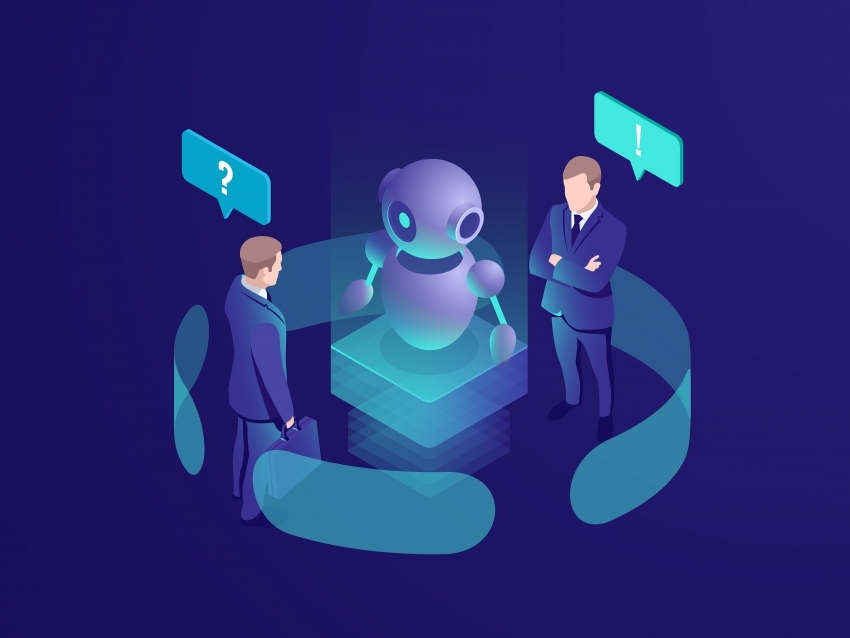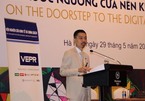 |
|
Vietnam needs to address its human resource issues to fully capitalise on AI
|
However, the small- and medium-sized enterprises (SMEs) seem to find it difficult to secure the capital and human resources to apply Artificial Intelligence (AI).
A PwC study shows that the application of big data and AI into maintenance operations could increase by 38 per cent in the next five years.
This technology allows companies to better understand assembly lines and anticipate maintenance errors. Thus, manufacturing companies are no longer dependent on a fixed maintenance schedule.
If it is possible to predict technical errors, factories can avoid production disruptions, improve the life circle of machines and equipment, as well as stabilise production.
In particular, intelligent robots with the ability to perform complex operations requiring high precision can soon replace people in dangerous stages, thereby increasing productivity and safety levels in factories.
Not only in manufacturing, but many telecom companies have started AI applications in managing mobile phone subscriptions. VNPT has been actively investing in human resources to master many AI technologies.
Notably, it has deployed AI technology in its registration management application and updated SMCS mobile subscription information.
VNPT also said that with AI technology, registering subscriber information will only take up to five seconds compared to the many manual steps needed previously.
This AI technology automatically peels off all image data, converts it into text and injects information into the corresponding data fields, allowing the use of electronic signatures and electronic records.
Another telecom giant, Viettel, is also developing strongly based on AI analysing voices, images, completing virtual assistant software, distinguishing abnormal acts, and turning information into assets valuable not only for Viettel but also for the society.
In the field of health, Viettel’s solution for analysing and diagnosing abnormal images by ultrasound (a diagnostics solution to support patients and doctors 24/7) is undergoing the final tests in the laboratory.
Besides these developments and advantages, Vietnam and the world lack the AI workforce in both quantity and quality.
According to the TopDevz IT recruitment platform, the shortage of skilled IT workers is an obstacle to Vietnam’s IT industry in catching up with the world’s technology.
In the country, there will be a shortage of 75,000 IT personnel in 2019 which will continue to increase to 100,000 in 2020, according to Enternews.vn.
In the report Overview of Artificial Intelligence in Vietnam 2018 announced by Nexus FrontierTech, rubikAI, and G&H Ventures, AI enterprises also face many difficulties when starting their businesses.
About 59 per cent of the companies have been established less than two years ago, and 34 per cent of them may mobilise more than $200,000 from investors.
Nexus FrontierTech, rubikAI, and G&H Ventures proposed that to motivate AI development in Vietnam, the education and training system should play an elevated role, and the country should attract more
foreign investment.
“Formal AI training at universities, or more widely popularised technology training is needed to solve AI manpower problems, bringing many career opportunities for technology talents.
In addition, most AI companies still operate at the initial stage on a small scale, with 68 per cent employing fewer than 50 people, and 70 per cent having fewer than 10 engineers.
Therefore, corporations and venture capitalists can provide vital support,” the research team stressed.
Building an AI-ready workforce is a vital issue to solve to develop the AI sector. According to PwC, 38 per cent of executives will focus on AI tools for business people, the second-ranked capability they will
cultivate after reusable data sets and models.
However, AI is still complex. Even with basic training, people may not fully understand different AI algorithms’ parameters and performance levels.
They could accidentally apply the wrong algorithms and get unintended results.
Therefore, a workforce strategy that creates three levels of AI-savvy employees, including citizen users, citizen developers, and data scientists, provide ways for all three to work together successfully.
As AI spreads, most of a company’s employees will need training to become AI citizen users to use the company’s AI-enhanced applications, support good data governance, and get expert help when
needed.
A more specialised group, perhaps 5 to 10 per cent of the company workforce, should receive further training to become citizen developers: line-of-business professionals who are power users and can
identify use cases and data sets, and work closely with AI specialists to develop new AI applications.
Finally, a small but crucial group of data engineers and data scientists will do the heavy lifting to create, deploy, and manage AI applications.
In fact, there are not enough human resources who can do the work to go around for AI companies.
Thus, with the spread of AI, the issue of AI workforce and training are emerging as burning issues that
need to be resolved with haste. VIR
Tan Duong

85 percent of Vietnam's enterprises remain outside of Industry 4.0: report
As many as 85 percent of industrial enterprises in Vietnam still lag behind the fourth Industrial Revolution (Industry 4.0), and only 13 per cent are at the beginner level, one official has warned.

Technology group FPT to build AI-education complex in Binh Dinh
The FPT Corp recently received approval to build an AI-education complex in Binh Dinh province.

Vietnam makes big leaps in AI development
Vietnamese technology firms have gained great achievements in AI among the presence of technology giants, especially in the last 1-2 years.
 AI has now become the key for technology companies to help reduce errors, increase the productivity and quality of their operations, and minimise work accidents in modern
AI has now become the key for technology companies to help reduce errors, increase the productivity and quality of their operations, and minimise work accidents in modern